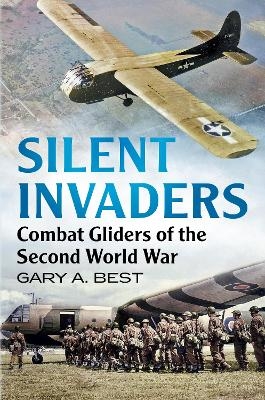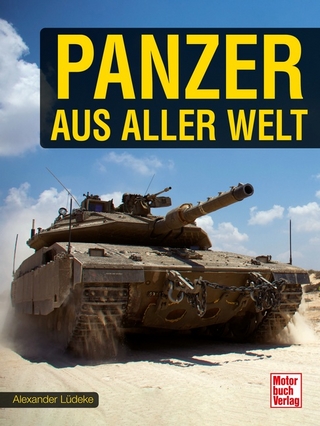
Silent Invaders
Fonthill Media Ltd (Verlag)
978-1-78155-853-9 (ISBN)
Combat gliders were called by some as Death Crates, Purple Heart Boxes, Flying Coffins and Tow Targets . They were not pretty and had no graceful lines. Viewed from the front, they had a pug nose and a sloping Neanderthal forehead. Their wings looked like the heavily starched ears of a jackrabbit placed at right angles on a canvas-covered frame. Twice the length of the body, these wings were eighty-four feet in length, 70 per cent as long as the Wright Brothers first powered flight at Kitty Hawk. They could not become airborne, let alone fly, unless assisted by an engine-powered tow plane. And for those riding in the back, it was like flying through the gates of hell . The men who were trained and assigned to guide gliders into battle were said to be the only pilots who had no motors, armament, parachutes and no second chances. Like the aircraft they commanded, they were called inglorious names such as The Bastards Nobody Wanted, Glider Gladiators in Wooden Chariots; Hybrid Jackasses and Glory Boys. Beautifully written, profoundly illustrated and researched, Silent Invaders: Combat Gliders of the Second World War is a work that is dedicated to those brave men under impossible odds from the British and American servicemen on D-Day, the doomed Operation Market Garden in Holland and Hitler s radical commando raid to rescue Mussolini."
Gary A. Best earned a PhD from the University of Minnesota and holds rank as Professor Emeritus at California State University, Los Angeles. He was a Fulbright Scholar in Taiwan, is the recipient of the Outstanding Professor award of his university and has been named a distinguished alumnus from two colleges. His first book of the Second World War, Belle of the Brawl; Letters Home from a B-17 Bombardier, was a medalist of the Military Writers Society of America.
Foreword; Preface; Part I The Machines: The Beginning; Pug Ugly and Deadly; Gliders in the UK; German Gliders; Japan and the Soviet Union; Tugs and Tows; PART II The Men and their Training: The Men; Training: Washed Out, RTU, and LMF; The Devil is in the Details; Part III The Missions (In Chronological Order): “Far Away Places, With Strange Sounding Names”; Another Route to War, Another Destination to Combat; Eben Emael: Old and Conventional vs New and Unconventional; Unternehmen Merkur Operation Mercury Crete; Operation Freshman; Sicily “This was a bad time for the Regiment”; Commando Skorzeny; Burma Operation Thursday/Project 9 “Tonight you’re going to find out if you have a soul”; D-Day Operation Overlord: Voices from Normandy; Southern France Operation Dragoon: Dingson 35A; Silent Invaders; Operation Market Garden; Nuts!; Operation Varsity 3 Hours, 20 Minutes: The Summer of ’45; Endnotes; Acknowledgements; Bibliography; Photographic Appendix; Index.
| Erscheinungsdatum | 30.06.2022 |
|---|---|
| Zusatzinfo | 123 black and white photographs |
| Verlagsort | Toadsmoor Road |
| Sprache | englisch |
| Maße | 156 x 234 mm |
| Gewicht | 558 g |
| Themenwelt | Natur / Technik ► Fahrzeuge / Flugzeuge / Schiffe ► Militärfahrzeuge / -flugzeuge / -schiffe |
| Geschichte ► Allgemeine Geschichte ► 1918 bis 1945 | |
| Geschichte ► Teilgebiete der Geschichte ► Militärgeschichte | |
| Sozialwissenschaften ► Politik / Verwaltung | |
| ISBN-10 | 1-78155-853-1 / 1781558531 |
| ISBN-13 | 978-1-78155-853-9 / 9781781558539 |
| Zustand | Neuware |
| Informationen gemäß Produktsicherheitsverordnung (GPSR) | |
| Haben Sie eine Frage zum Produkt? |
aus dem Bereich


